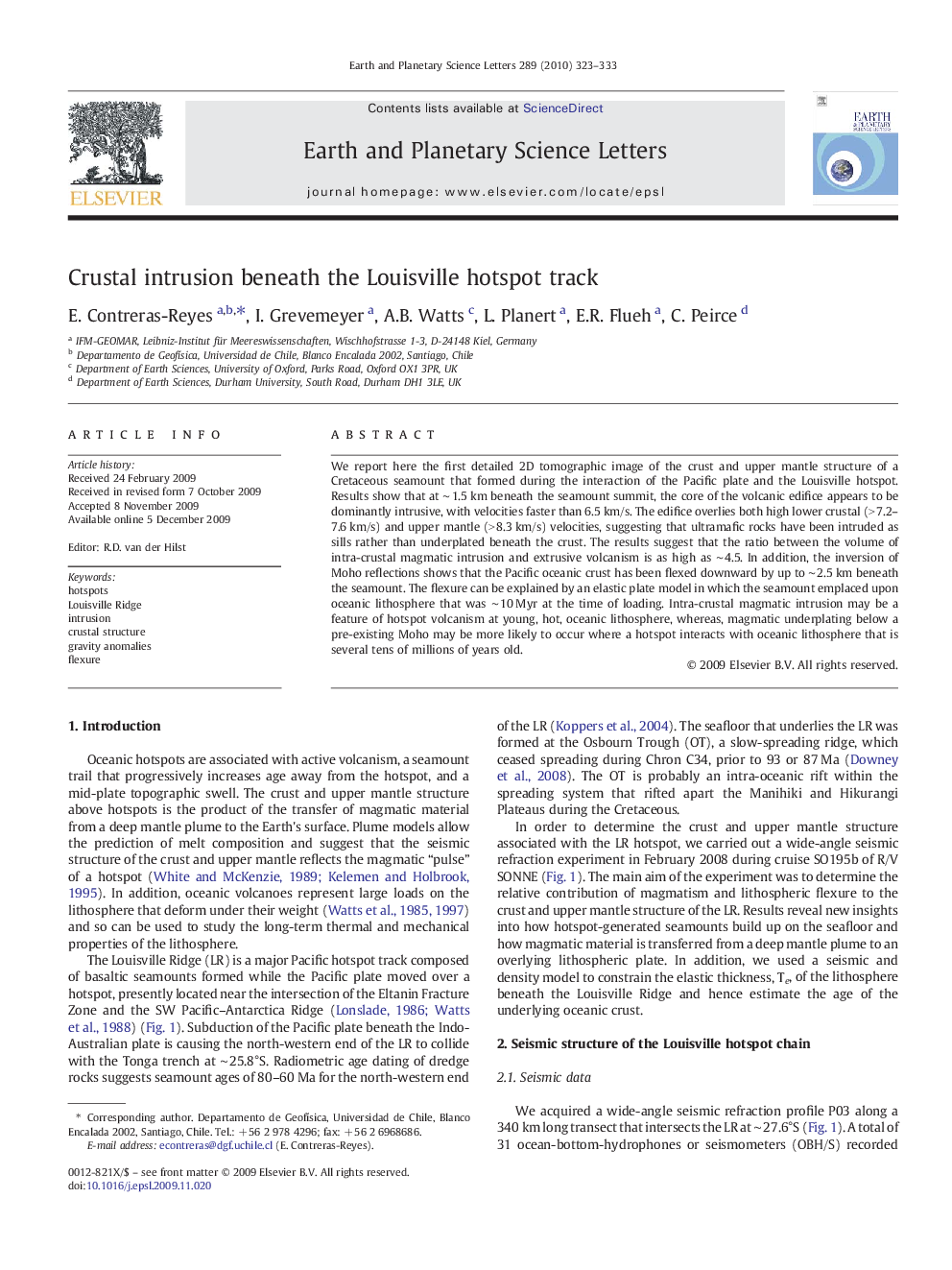| Article ID | Journal | Published Year | Pages | File Type |
|---|---|---|---|---|
| 4678767 | Earth and Planetary Science Letters | 2010 | 11 Pages |
We report here the first detailed 2D tomographic image of the crust and upper mantle structure of a Cretaceous seamount that formed during the interaction of the Pacific plate and the Louisville hotspot. Results show that at ∼ 1.5 km beneath the seamount summit, the core of the volcanic edifice appears to be dominantly intrusive, with velocities faster than 6.5 km/s. The edifice overlies both high lower crustal (> 7.2–7.6 km/s) and upper mantle (> 8.3 km/s) velocities, suggesting that ultramafic rocks have been intruded as sills rather than underplated beneath the crust. The results suggest that the ratio between the volume of intra-crustal magmatic intrusion and extrusive volcanism is as high as ∼ 4.5. In addition, the inversion of Moho reflections shows that the Pacific oceanic crust has been flexed downward by up to ∼ 2.5 km beneath the seamount. The flexure can be explained by an elastic plate model in which the seamount emplaced upon oceanic lithosphere that was ∼ 10 Myr at the time of loading. Intra-crustal magmatic intrusion may be a feature of hotspot volcanism at young, hot, oceanic lithosphere, whereas, magmatic underplating below a pre-existing Moho may be more likely to occur where a hotspot interacts with oceanic lithosphere that is several tens of millions of years old.
